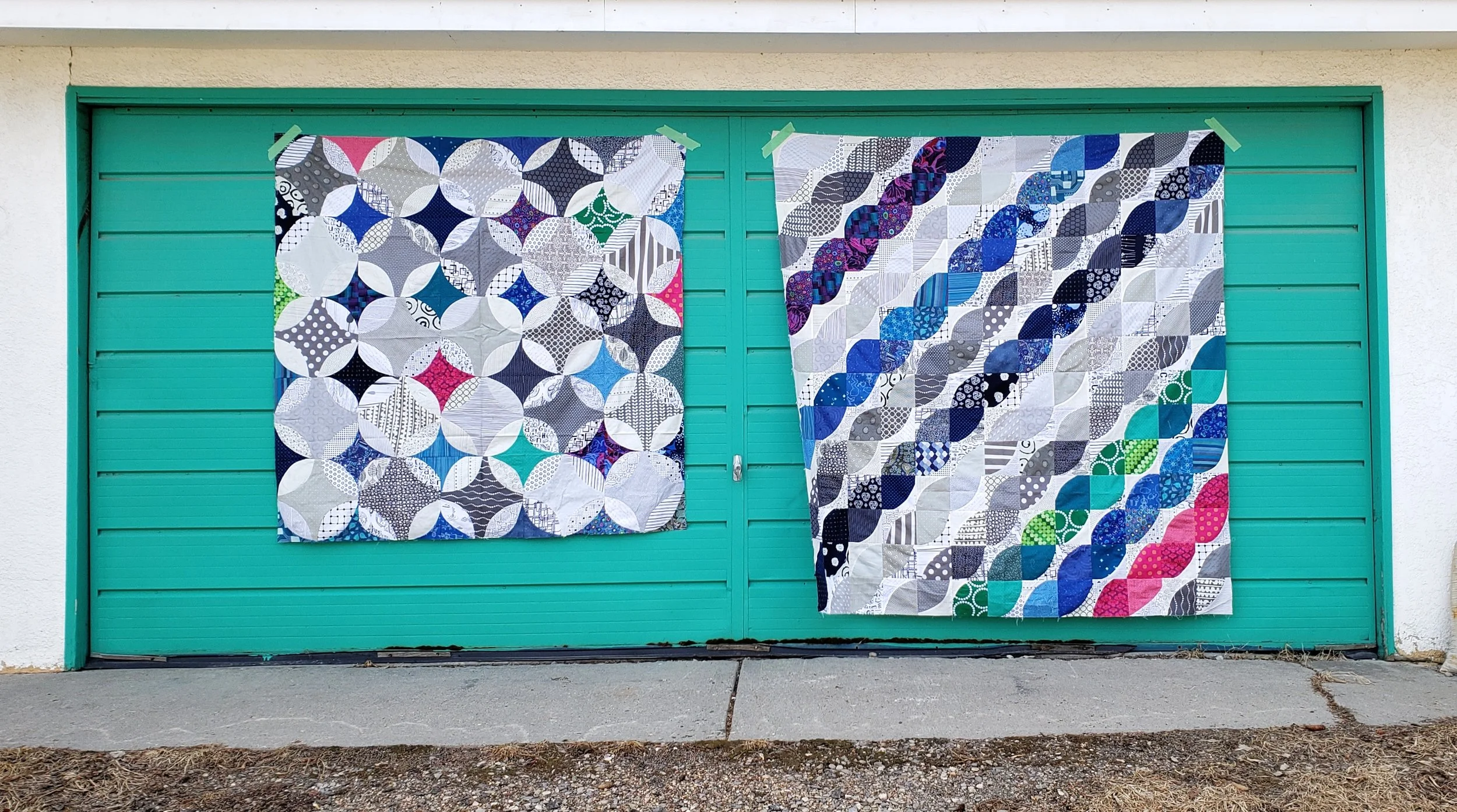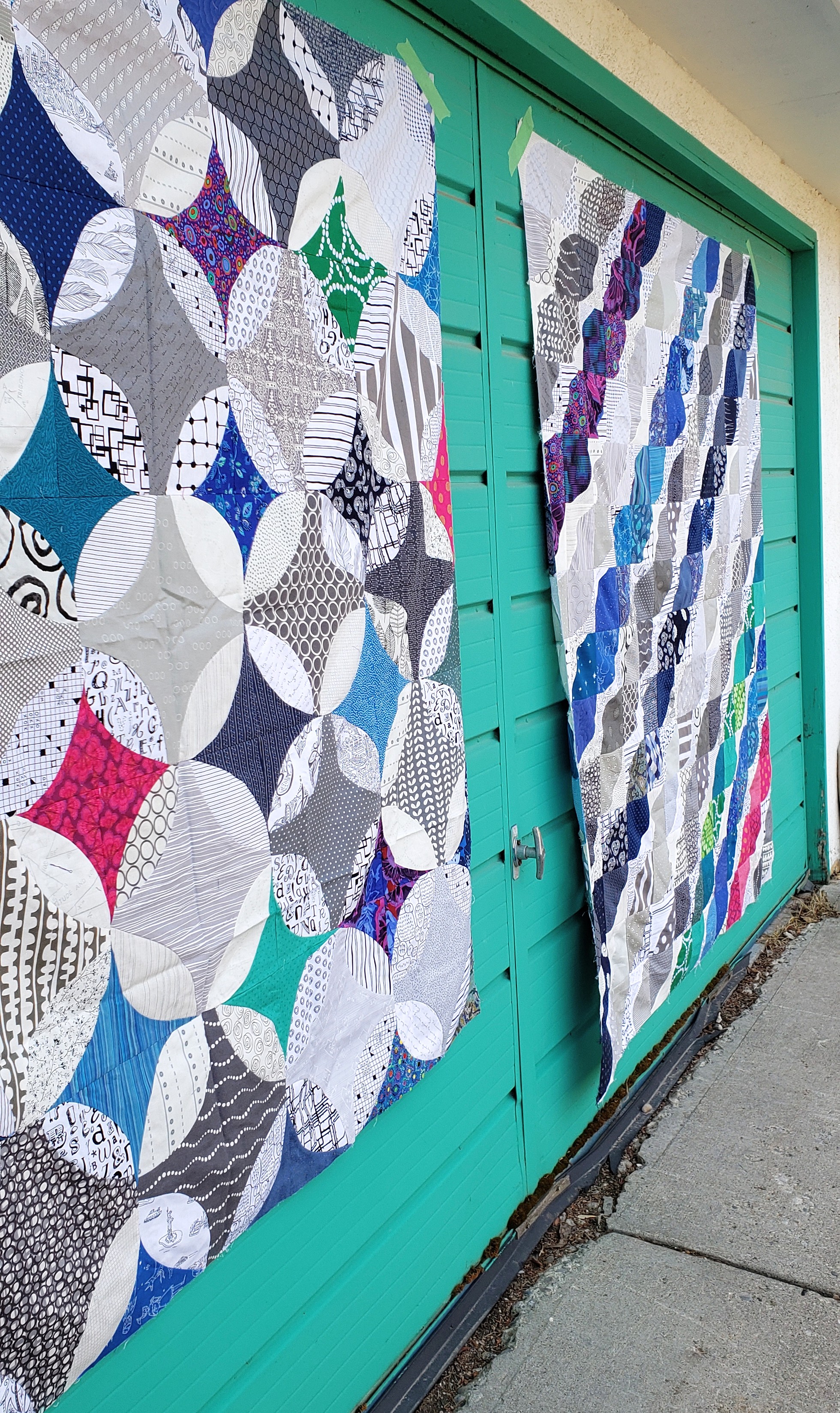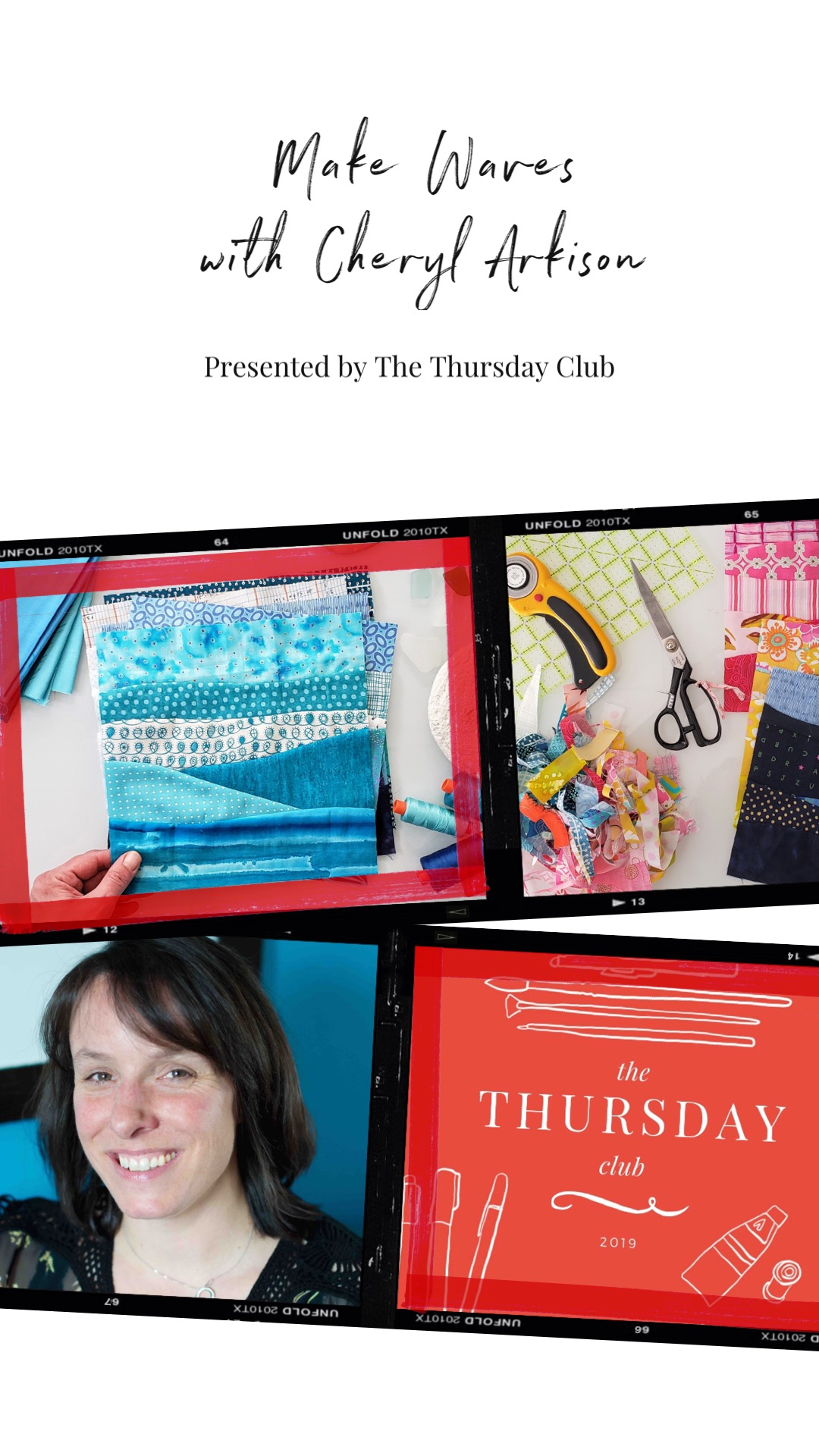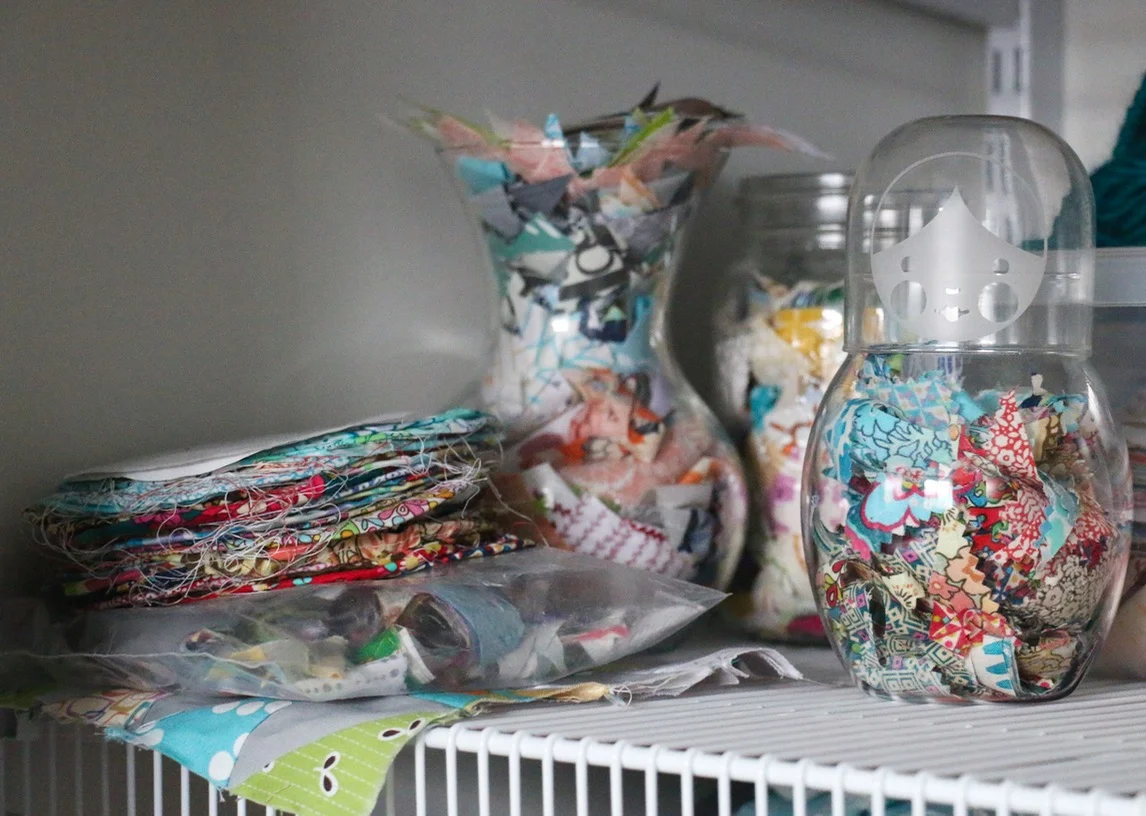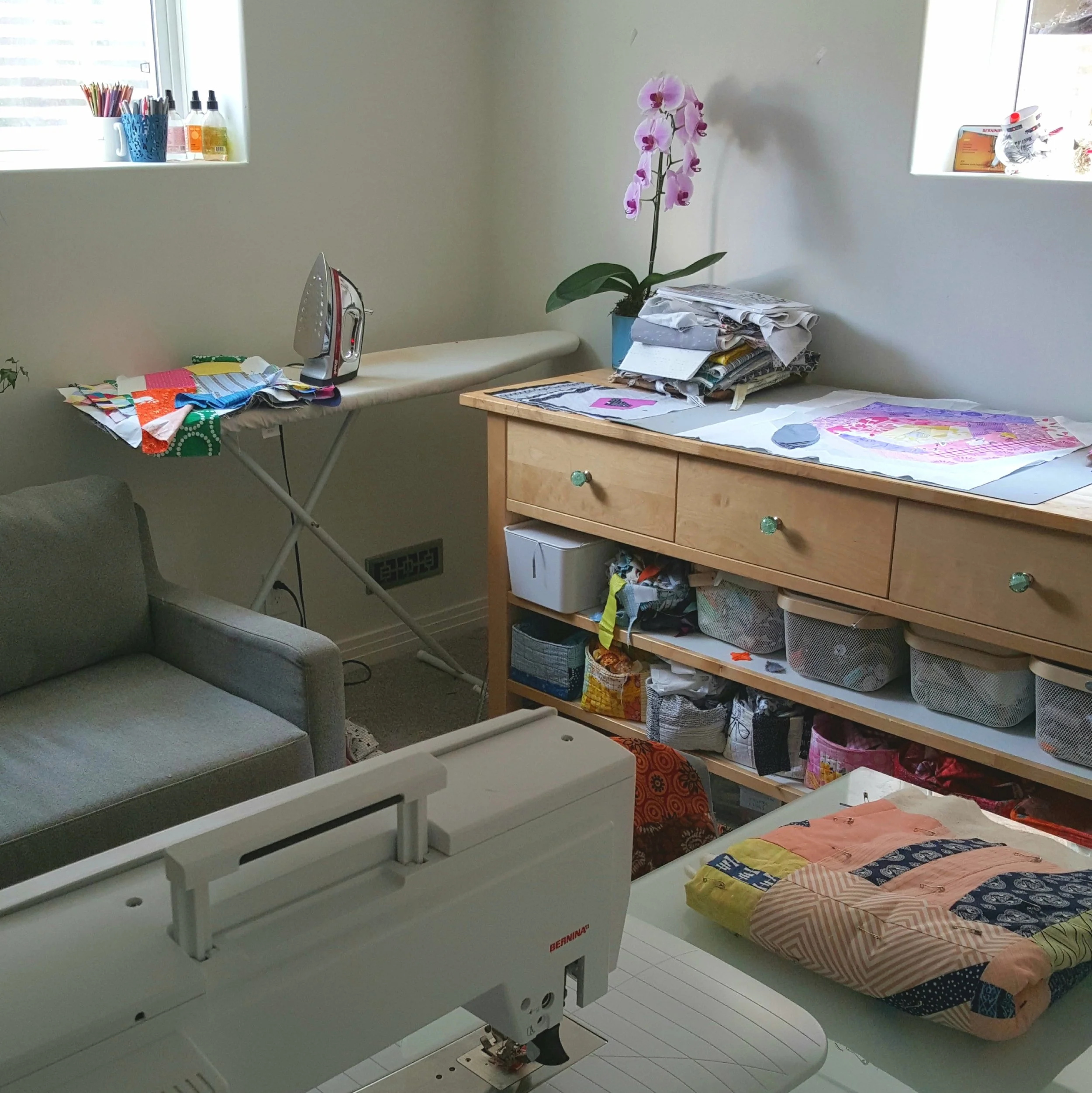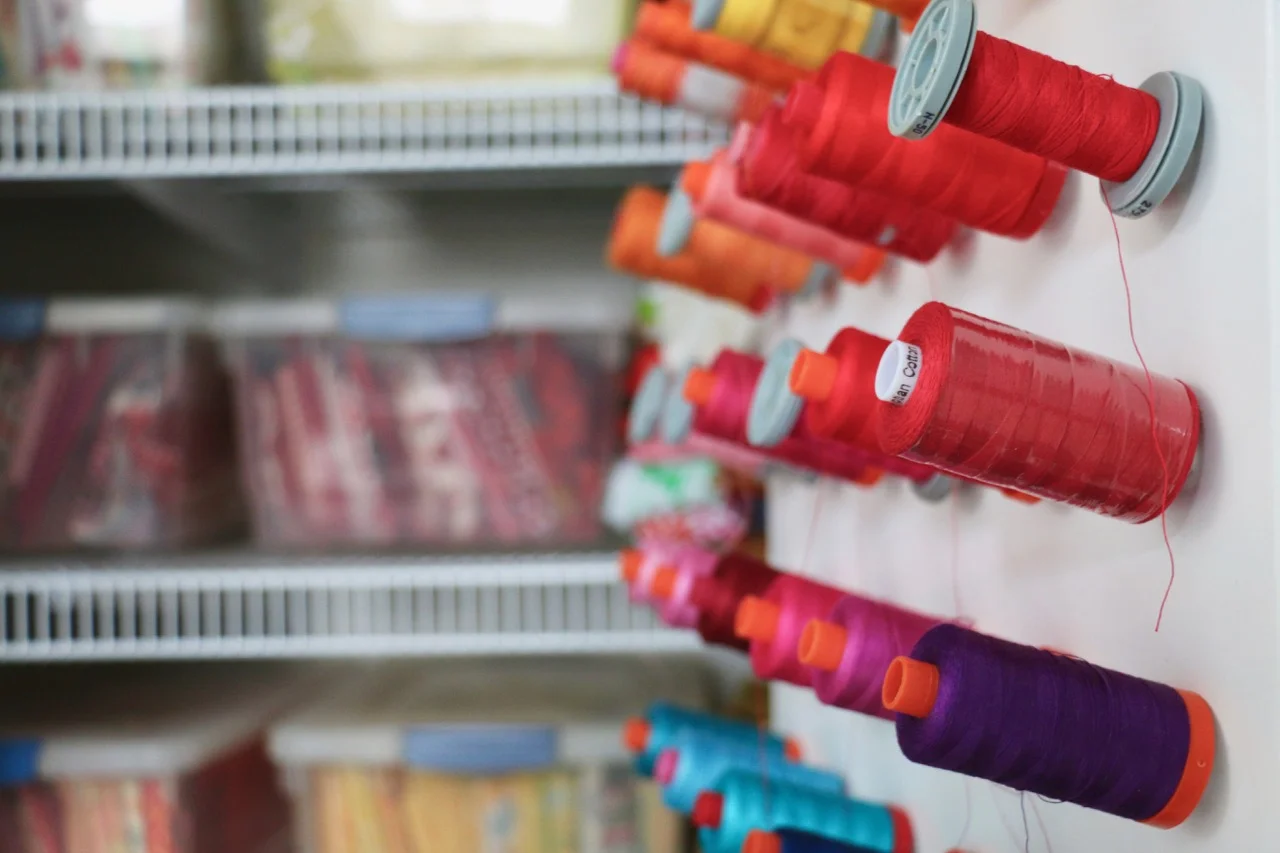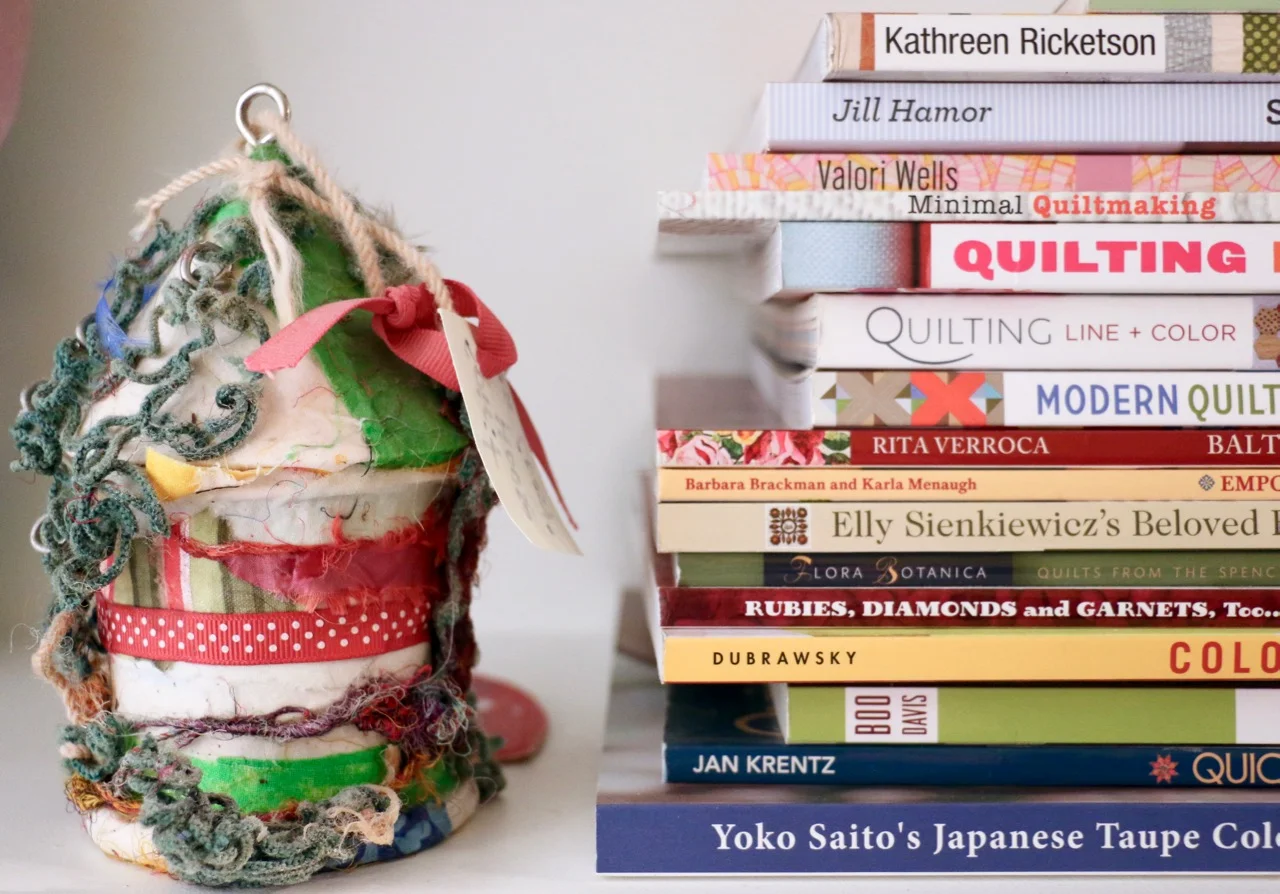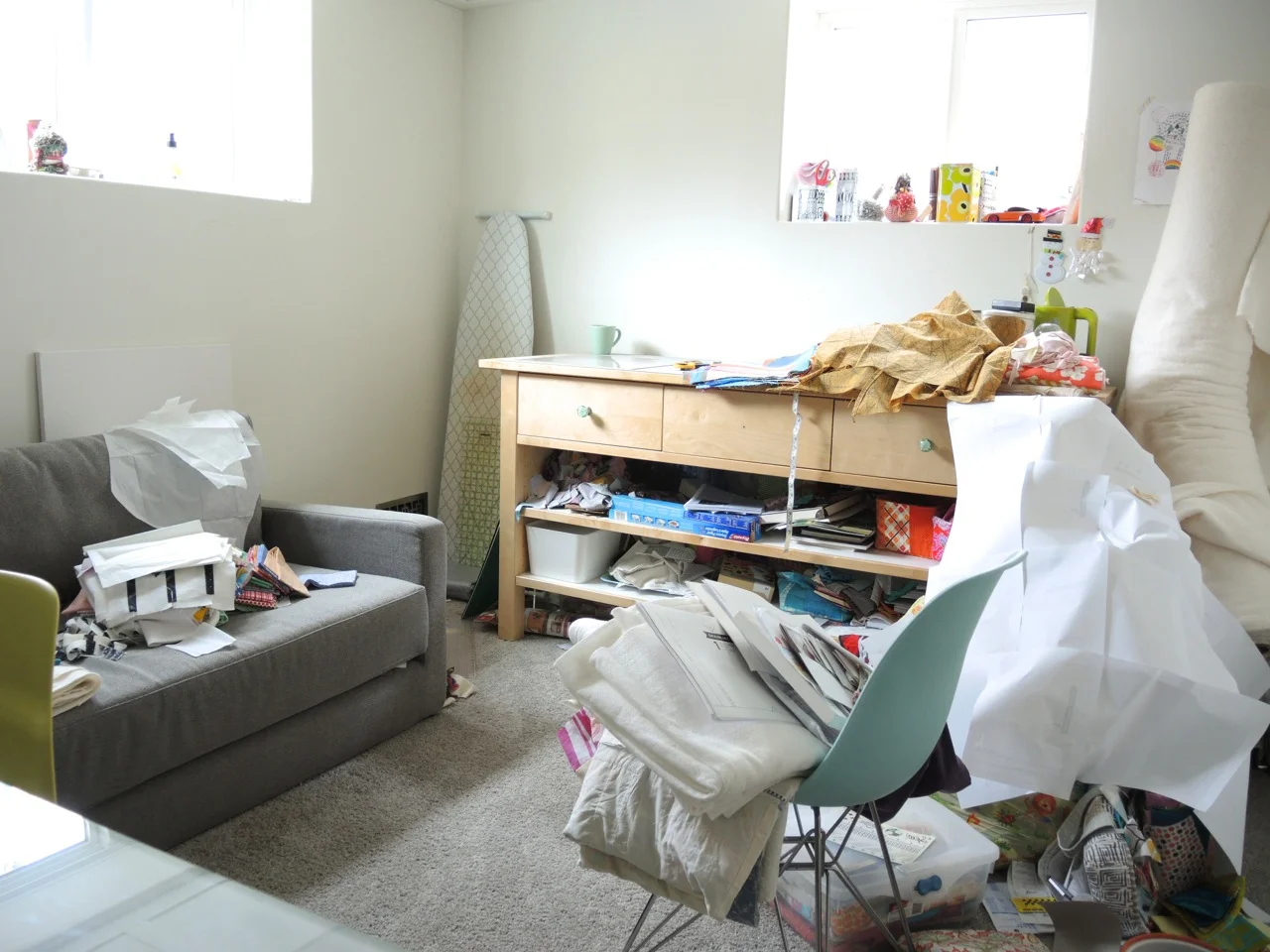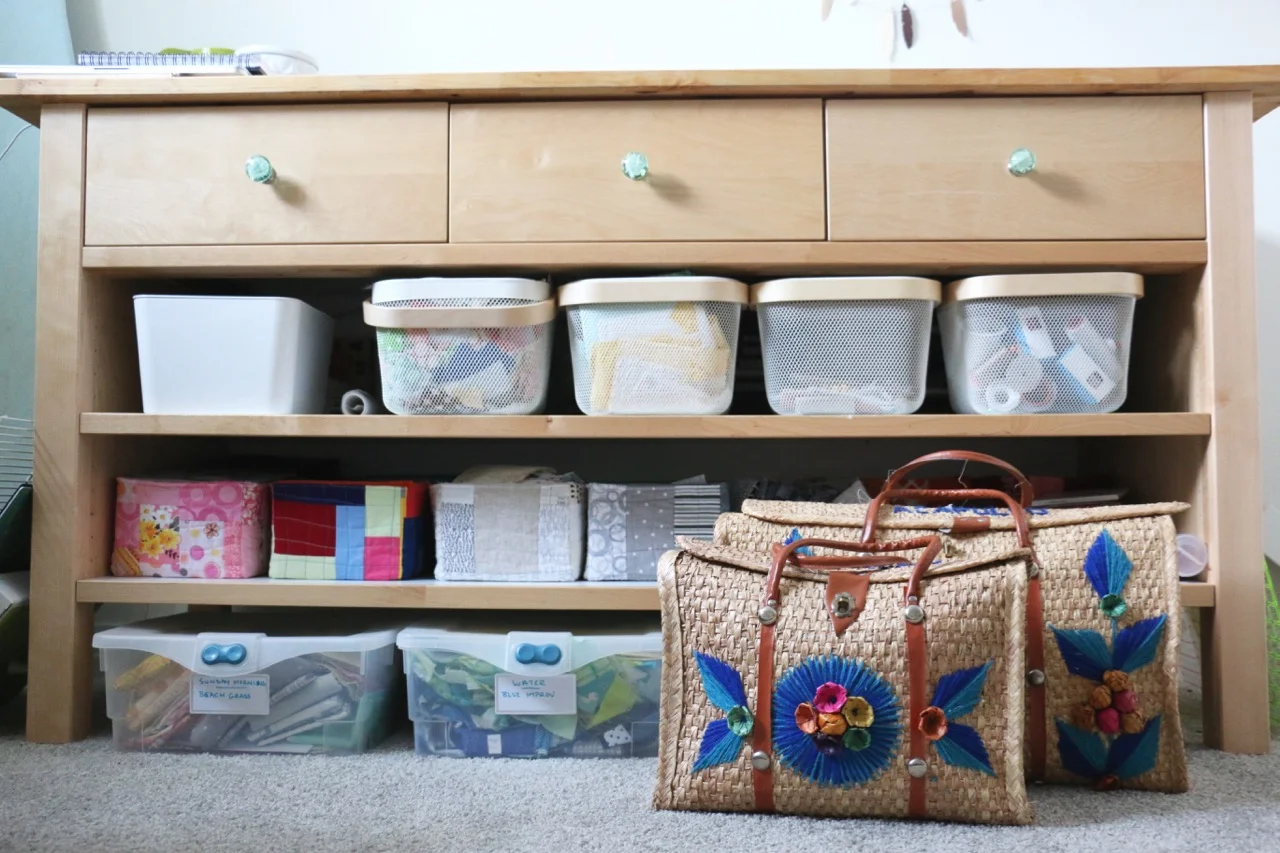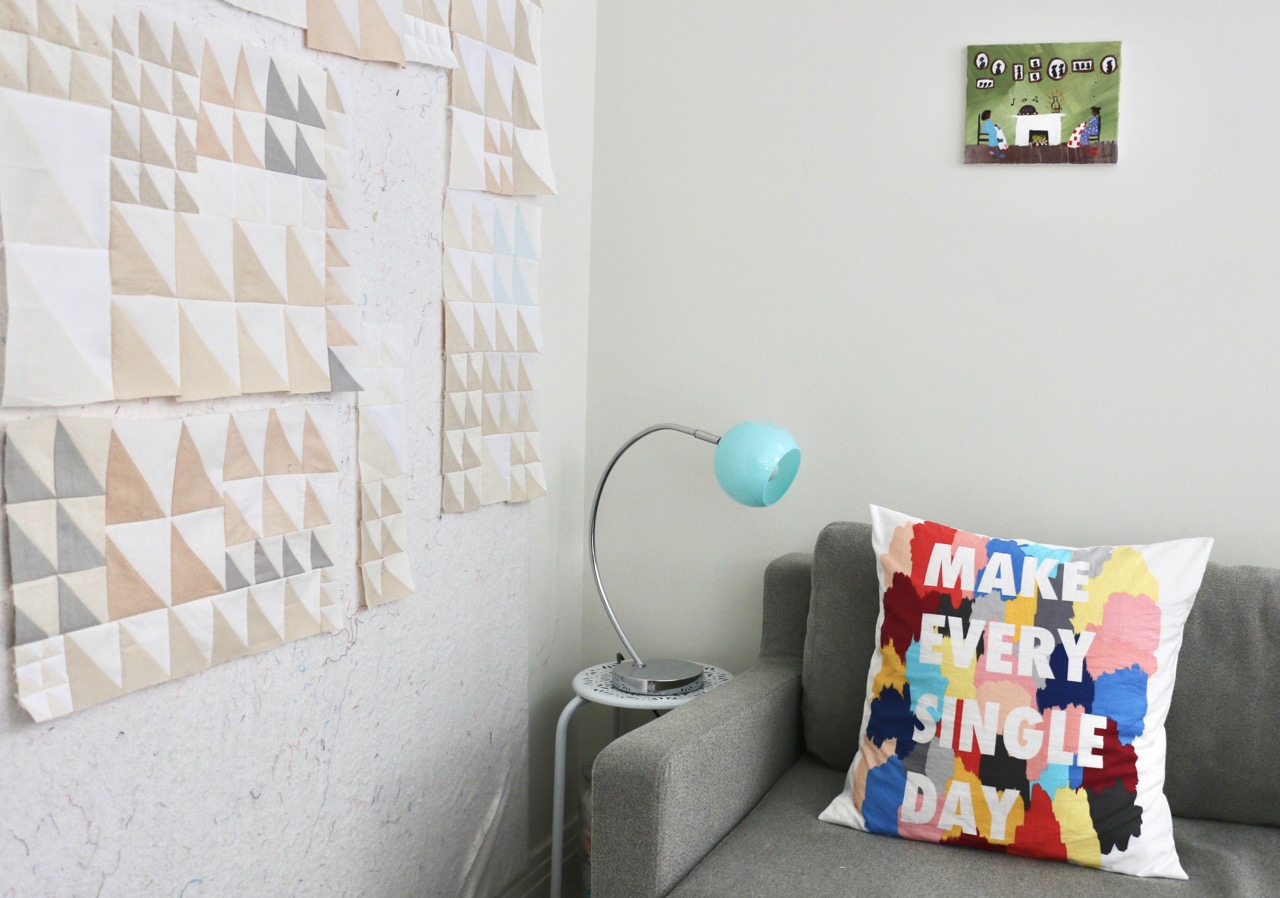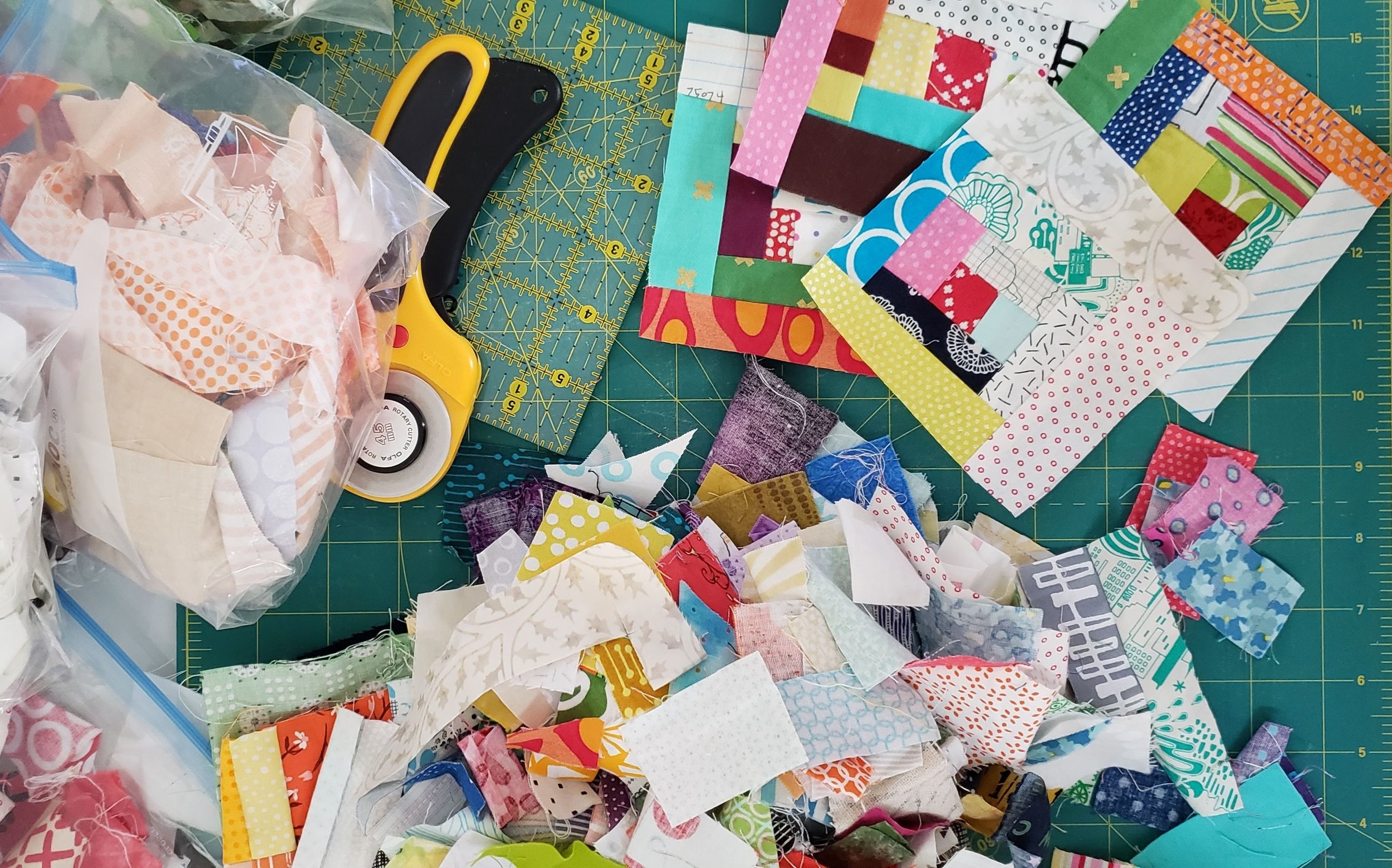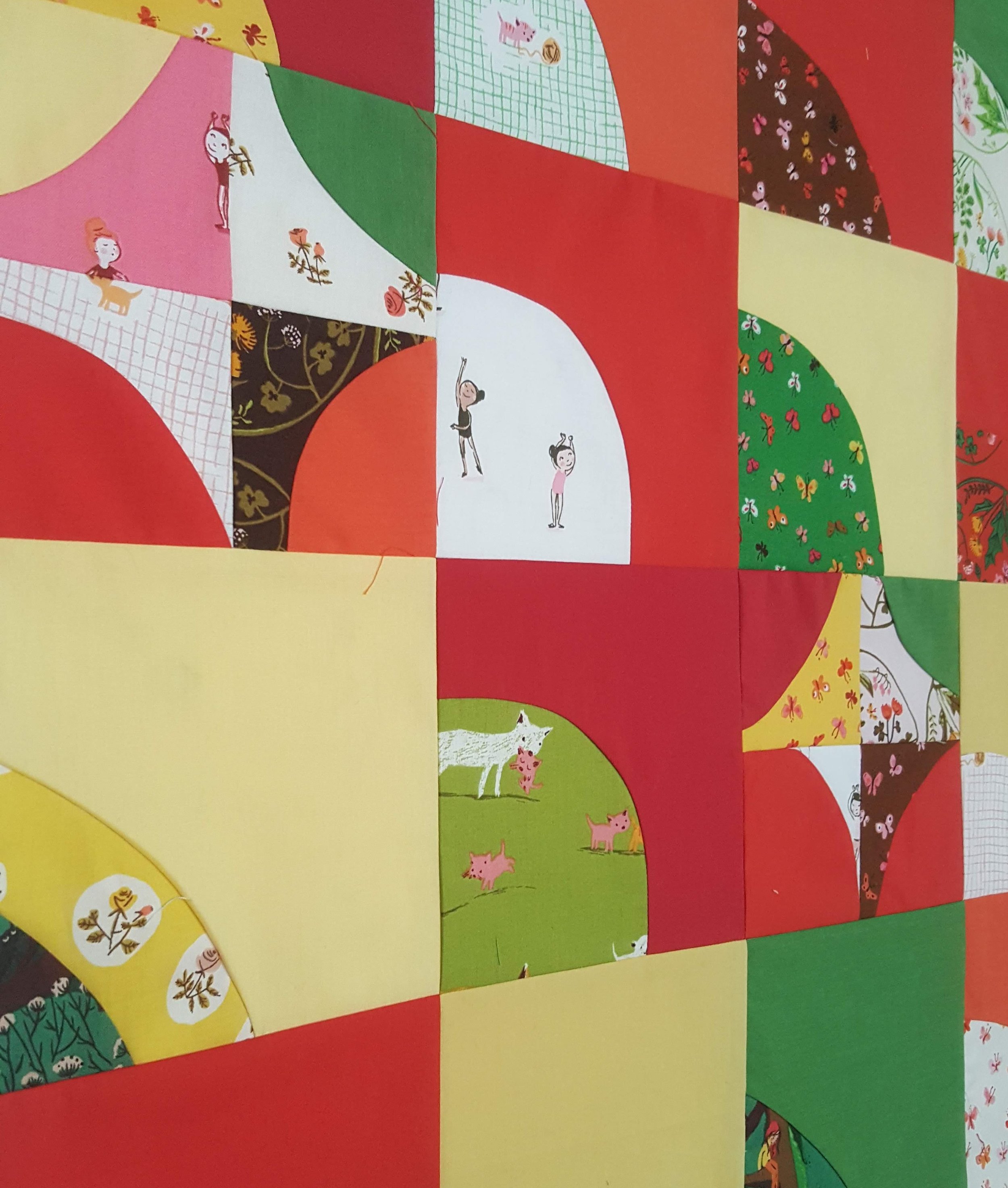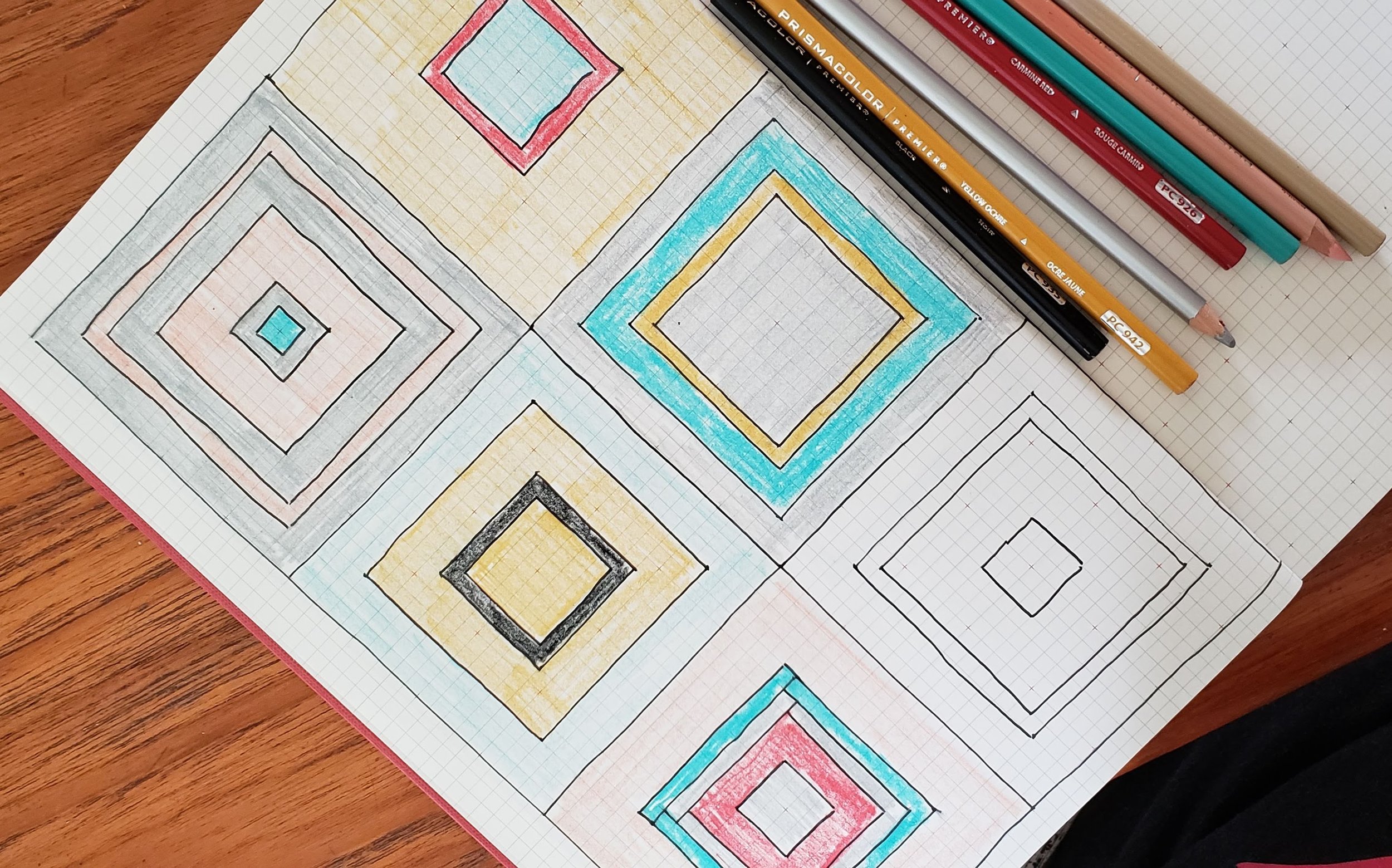I knew there was a reason I couldn’t throw away the scraps.
There I was, playing around and making this improv curve quilt. It was completely inspired by a very precise pattern by Sharon at Color Girl Quilts (Indigo). But the way I chose to make it meant then I was left with a lot of cut out curves. They matched and all, but they weren’t needed for the quilt I was then making.
Rather than toss them aside to get jumbled or lost I kept the pairs of pie and crust together then sewed them up when everything else was done. Then they got tossed aside and nearly jumbled and lost.
A few weeks ago I was in the mood to finish something. I was also in the mood for some design wall play. With zero plan for these scrap curves I started playing. For a few evenings I arranged and rearranged. Some layouts were too much like the original. One was, ahem, a little too lady-like. I had flowers and other things up there too. In the end I settled on the one that - at first - felt too predictable. But that first instinct proved the best. It used up all but 9 of the blocks and I am thrilled with the results.
When I went to take the photo I discovered a very interesting thing - the scrap quilt was bigger than the original! Side by side they relate by way of colour scheme and the improv curves, but they are too very different quilts! One fundamental difference, however, is that I would call the first quilt scrappy, while the second is a scrap quilt. That is, the first one has multiple fabrics, all chosen deliberately. The second one was me working with what I was handed in scraps. It might be a subtle or even a semantic difference, but there is a difference.
Side note: The difference between scrappy and scrap is one of my new truck shows!
These now get added to the pile of quilt tops. No matter when they eventually get quilted though, I think they will have to go to a certain pair of sisters that lives in my house.



